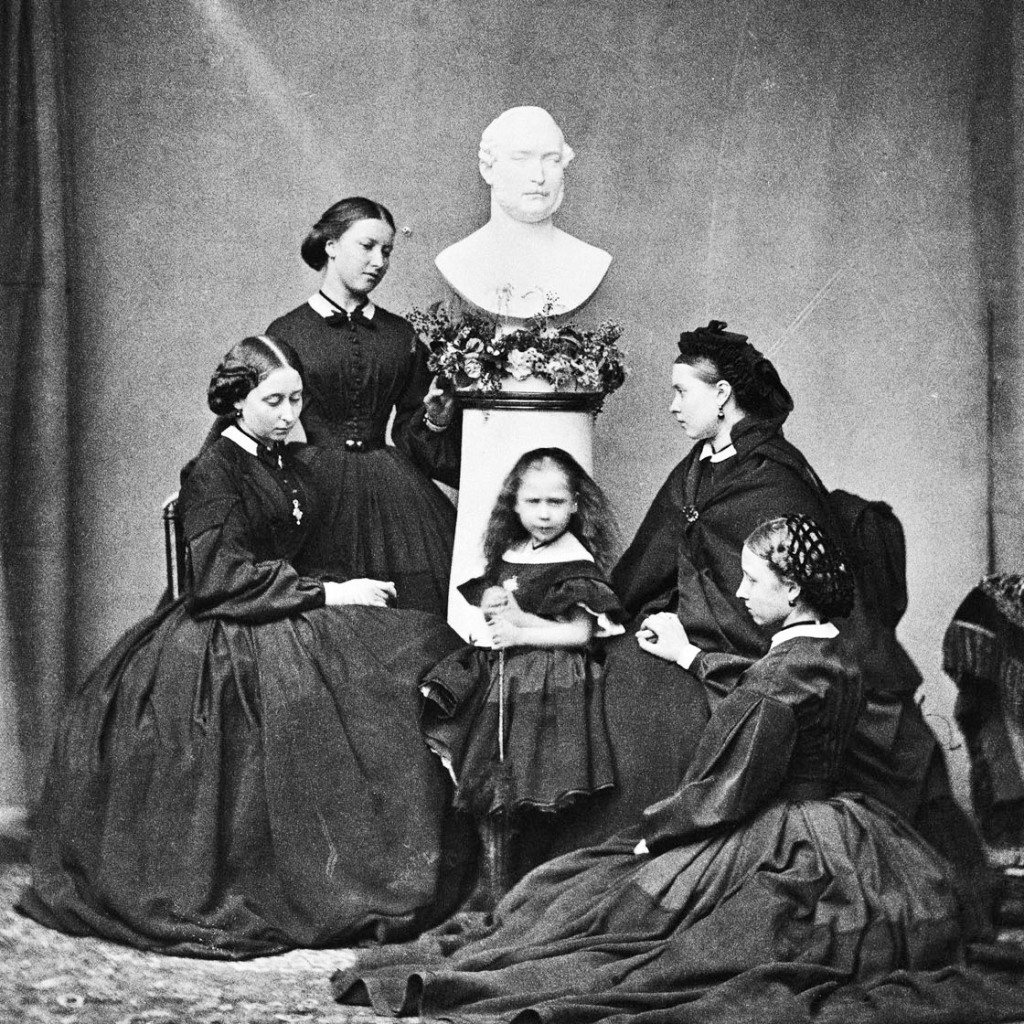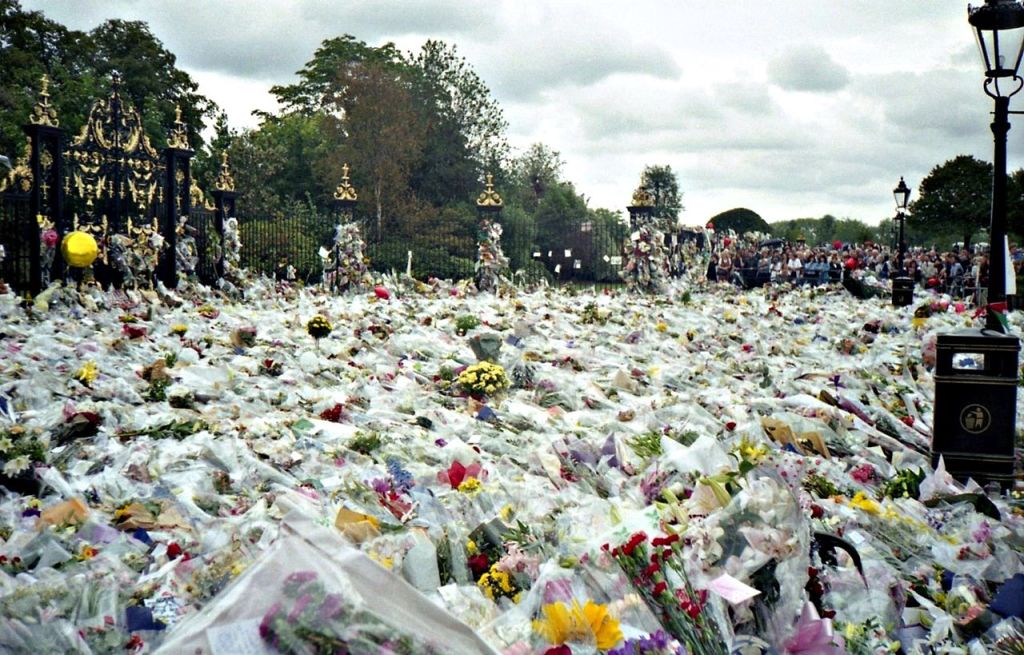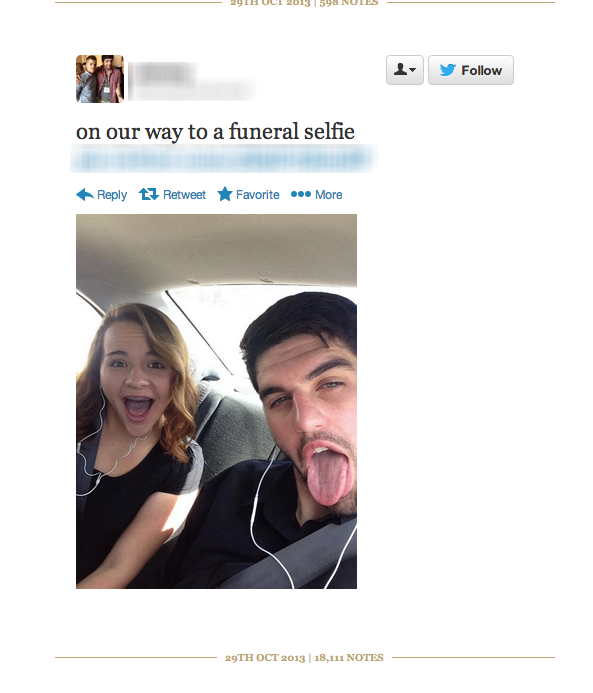
It’s the blip between snapshots of pumpkin spice lattes and grainy clips of kids-doing-the-darndest-things during your early morning Facebook scroll. A reminder that perhaps (excuse the social media sacrilege) collecting the most likes on your profile picture and getting the most retweets are not the most important things in life. Because life comes to an end – as the death clichés prescribe – and oftentimes the only things leftover in our time and age are the hashtags on your newsfeed spelling out R.I.P.
#ripOscardelaRenta, #ripRobinWilliams, #ripJoanRivers – pound, pound, pound beats that drum inside your chest. For a brief moment, you and the world mourn together. You find camaraderie with others who love the deceased’s work (despite having only seen him once on a magazine cover while in the checkout line at Whole Foods). Grief becomes that silent Google search for answers – who was this man? why did he die? why should we care? As soon as you find these answers, they fade into the information abyss and get lost among throwbacks and selfies, buried like the individuals they claim to commemorate.
This public memorial service garners mixed reactions – some deem it a trivialization of death while others see it as a barbaric contest of who is grieving more. But these judgments come from self-proclaimed sages who distance themselves from the cyber-culture, and consider it the plague of youth. However, for us narcissistic teens, we can’t reminisce on those good ole pre-Internet days (don’t fool yourselves, children of the 90s). We are the first Internet explorers, who have decidedly popped a squat in the World Wide Web and called it home. We don’t search for words on Urban Dictionary (at least, not that often); we define them. Our language involves shared, abridged and disrupted forms, implied meanings, and a host of both inanimate and moving signs (s/o to gifs) – in essence, a certain complexity that sometimes becomes lost to the older ages.

Those so quick to criticize the digital generation forget their own hour of mourning. From JFK to Princess Diana, we all have ached for these extinguished stars and icons. The only difference is that instead of white lily bouquets, we send our condolences via flower emojis. We all pay homage to these individuals whom we never knew, because their deaths awaken us to that sad and sorry truth: fame, success, and wealth do not excuse you from your inevitable demise.
Still, collective grief spreads outside the scope of stardom and celebrity. The tragedies and disasters of the average Joe also hit close to home. These too-real moments of a familiar face fading away break us by exposing our mortality and derailing our conviction of invincibility. So we post, tweet, and cope by any means necessary, shouting out to the world that we are alive. Some day we will be gone, but not today. And that’s something to share.
Although not everyone agrees, as shown by the polarizing viral sensation of what has been described as the downfall of humanity: selfiesatfunerals.tumblr.com. This website is a photo collection of (you’ve guessed it!) selfies taken by teenagers at funerals, curated from Instagram and Twitter. In these pictures, somber but self-aware captions are paired with contradictory facial expressions. For instance, a girl sporting a classic duckface notes: “this is a funeral selfie am i going to hell 1.” The teens’ hyperawareness to the absurdity of their situation, i.e. a photo op at a funeral, suggests that there’s something more to these images. They can’t be written off as simply vain, attention-seeking acts.
Being a teen in real life, when I browse this webpage, I don’t experience a visceral, cringe-worthy reaction. Yes, I have a vague sense that something is not quite right, but it’s like that feeling you got when you used to go online without asking for your parents’ permission. Even though you were told by voices from the beyond that you shouldn’t, you did it anyway because you were going to live the life you wanted (thank you, Oprah). In the case of funeral selfies, death has left these teens confused, and they’re going to do whatever the hell they want to do in order to go on living.

So much attention is given to the afterlife, yet relatively little is said about afterdeath, that is, how to go on living after someone dies. Trying to come to terms with life after death proves to be no easy task (and those vapid self-help books don’t do any good, either). Fortunately, the Twitter feeds and Facebook profiles of the deceased endure. Like open caskets, these are both morbid and memorial, more for the living than the dead. During my senior year of high school, an underclassman passed away due to injuries sustained in a traffic accident. His (virtual) wall lit up with messages from friends, former elementary/middle school classmates, and we-never-talked-before acquaintances. Each post shared similar themes: disbelief over his untimely end, nostalgia for their friendship, and feelings of powerlessness in regards to his absence. These messages clearly were not meant for him. They provided a forum for his friends to grieve, celebrate, and remember. In this way, Facebook profiles-for-the-dead offer open archives for us to hold onto, echoing that ignored augury of concerned parents everywhere: the Internet lasts forever.
The grieving process takes time, or so soothes the Buzzfeed piece called “12 Stages Of Grief That Involve A Lot Of Time” (Internet, go home – you are drunk). Urging the bereaved to find support, these articles are probably written by the same people who disapprove of the tweet-it-and-weep culture. They are the critics who reduce complex things into neat and simple lists. They only see selfies as self-centered, #RIP as insincere, and teens as narcissists. They just don’t get it (as proclaimed by angsty adolescents everywhere).

What they don’t see is the mo(u)rning after everything has been shared, retweeted, and reblogged. In the aftermath, we find a community of mourners who not only remind us that death sucks, but also, in the here and now, we are not alone in thinking so. Digital solidarity gives us the strength and security to reach a point where holding on becomes moving on. It’s at this point when we log off and shut off the computer. We realize we no longer need 140-characters to grieve, selfies to celebrate, or digital archives to remember. Social media allows us to interact with death not head-on, but in my generation’s signature roundabout fashion. Just because we mediate our feelings doesn’t mean we don’t have them. Just because we smile at a funeral doesn’t mean we aren’t sad. Life is too short (sorry, again with the life-death clichés), so go ahead – sip that commercialized taste of autumn, laugh at cute babies, and read those magazine covers in line because you, too, will one day be reduced to a hashtag. But, God and wifi willing, not today.
Notes and Errata
| 1. | ↑ | yes |

Janie Young
December 8, 2014 at 8:18 pm (3 years ago)This was a great post, I loved the read. I have been dealing with grief, and trying to live after the loss. Been reading some what I call off the wall books, right now The Fun of Staying in Touch by Roberta Grimes. It’s about communicating with someone who has died, I don’t know if I would try it, but makes you think. robertagrimes.com is her site, her stuff is very cool.